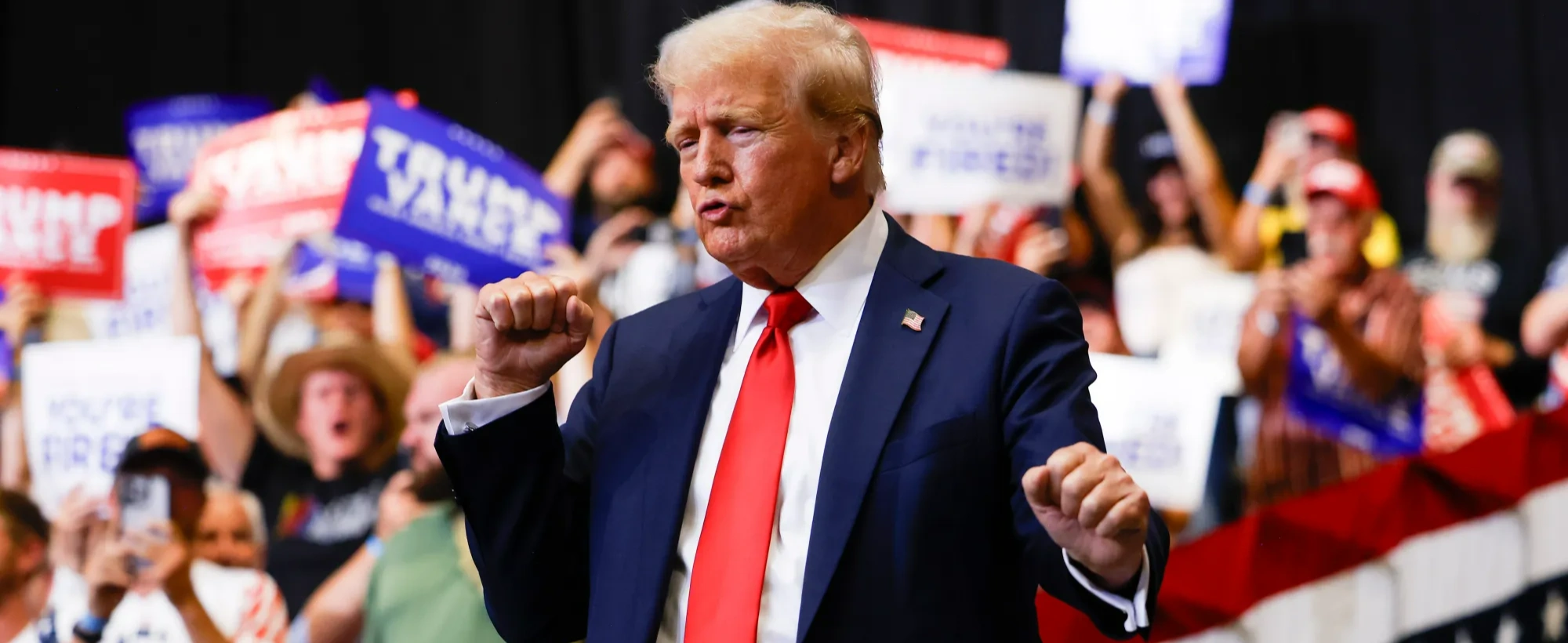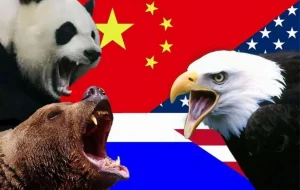Trump is Back! Can He Split China and Russia?

In an interview, Trump bragged about tearing apart China and Russia. Trump boasted of having a good relationship with Putin and also bragged about having a good relationship with China. Trump’s boasting is not taken too seriously by anyone, and no major power will change its overall direction based on personal relationships between leaders.
However, whether it is possible to tear apart China and Russia is not just Trump’s issue, but also an issue for the United States. For several years, this has been a focal point for the United States, China, and observers.
It requires little imagination to see that if the United States could tear apart China and Russia, it would greatly benefit isolating China, suppressing China’s rise, and then easily dealing with Russia. This is undoubtedly in the best interest of the United States and most detrimental to the interests of China and Russia. In theory, this might not be impossible, especially considering the precedent of Nixon’s opening to China leading to a joint effort against the Soviet Union and ultimately the collapse of the USSR. Of course, what no one mentions is that China has now become the United States’ greatest challenge to hegemony, surpassing even the Soviet Union. In their view, China’s rise is a matter of “management error.”
However, Nixon’s opening to China was actually a flawed precedent.
Before Nixon’s visit to China, the reality was a tripartite hostile relationship between the US, China, and the Soviet Union. The basis for the thaw between China and the US, leading to a joint effort against the Soviet Union, was hostility between all three sides. Now, the relationship between China, the US, and Russia is a 2:1 scenario. China and Russia are friendly, while China-US and US-Russia relations are hostile, at least predominantly competitive and minimally cooperative.
This means that for the US to tear apart China and Russia, it not only needs to resolve the hostility between the US and Russia but also needs to undermine the friendship between China and Russia. The US cannot achieve both of these objectives.
The hostility between the US and Russia has deep roots. Even when Russia was fully accommodating to the US after the Cold War, the US did not show goodwill but rather disdain towards Russia. Theoretically, the US still has the potential to tear apart China and Russia by wooing Russia. The question is what the US can offer to convince Russia. The US must provide Russia with extra benefits that Russia sees as additional, not merely returning what Russia already deserves.
Lifting sanctions is not enough, nor is giving up Ukraine to Russia or even halting NATO expansion eastward. These actions would only pause hostility, not provide benefits.
During the thaw between China and the US, American investments (including those from Hong Kong, Macau, Taiwan under US “tolerance”) in China and the opening of the Chinese market were considered benefits from the US to China. However, these are not benefits that can be given to Russia.
The US, especially under Trump’s turn towards protectionism, will not open its market to Russia. Russia also has nothing significant to export to the US; light textiles, machinery, electronics are not viable, which are the markets the US might consider opening. Russia’s heavy industry is too crude, and its military industry is even less likely to enter the US market. During Yeltsin’s era, the Russian industry thought they could get Western technology and investment assistance, fundamentally changing their crude nature. They received nothing, and even advanced military industries thought they would receive Western technology infusion in a friendlier era, only to be mercilessly plagiarized when they opened their technology secrets, leaving Russia with nothing. For example, Yakovlev offered the design of the Yak-130 trainer aircraft, but Alenia kicked out Yakovlev, rebranded the Yak-130 as the M-346, and it became a best-selling next-generation trainer aircraft in the Western world. The R-77 medium-range air-to-air missile with grid fins introduced the concept, but suddenly, the grid fins appeared on the Mother Of All Bombs. The vertical take-off and landing technology of the Yak-41 also appeared on the F-35B.
The US’s efforts to attract Russia are also constrained by Europe’s reaction. After the war in Ukraine, Europe’s hostility towards Russia has risen to at least Cold War levels and will not change due to US-Russia relations. US efforts to attract Russia would be seen as a betrayal of Europe. Even without historical context, the US and Europe need each other. Europe cannot be anti-Russia without the US, and the US cannot be anti-China without Europe. The US and Europe in collusion with each other, just with different targets to prey on.
In the era when the United States was trying to ally with China to counter the Soviet Union, Japan found it unbearable that the United States overstepped Japan and directly embraced China, but Japan’s importance to the United States is completely incomparable to Europe. At that time, South Korea was even more hostile towards China, but South Korea’s significance was lighter compared to Japan. Countries like Australia and New Zealand actually felt indifferent towards China, which was considered insignificant before its rise, despite already possessing nuclear weapons.
Regarding Russia, the benefits of improving relations with the United States are clear, while the downsides of confronting China outweigh the benefits. The only thing that aligns with Russia’s interests is a two-sided embrace, where both sides gain advantages. However, this is not what the United States wants in terms of tearing apart China and Russia. If Russia were to embrace both sides, it would mean the failure of the United States to sway Russia, leading to a dead-end. The precedent of the United States aligning with India against China is a case in point.
As mentioned earlier, the political benefits that the United States can offer Russia involve de-escalation of hostilities, but the economic benefits that Russia truly needs cannot be provided.
However, the repercussions of hostility between Russia and China are too significant. Firstly, the Far East is in a tight spot, necessitating the relocation of military forces to that region. Opting for active military hostility with China could place greater military pressure on today’s China than NATO did during the Cold War. Deploying significant military forces in the Far East, far from Russia’s political and economic centers, entails substantial costs. Considering that Central Asia may not align with Russia, Russia’s position becomes even more precarious.
Secondly, disrupting the nascent economic cooperation system between Russia and China would be detrimental. Russia’s traditional energy export destination is Europe, but after the war in Ukraine, Russia’s oil and gas exports to Europe collapsed and may recover but will ultimately be impacted by political correctness and decarbonization efforts. With China being a more reliable destination, there is no reason to abandon it. China is ahead of Europe in terms of decarbonization, but its energy demand is growing faster. For instance, urban gasification and peak electricity demand require significant amounts of natural gas. This is also true for Russia’s exports of timber, grains, and minerals. Imports from China are more cost-effective and meet Russia’s needs better than those from Europe and the United States. Agricultural cooperation between China and Russia in Siberia and other regions may lead to the cultivation of virgin lands for the first time, which holds significant importance.
Russia is cautious of China, but does Russia not have similar reservations towards Europe? After NATO’s eastward expansion, if anyone believes that Russia would blindly trust the sweet words of the US and Europe, they are mistaken.
The best time for the United States to tear apart China and Russia was in the 1990s, but back then, the US couldn’t see any necessity for it. In the 2000s and early 2010s, the focus of the United States was still on ensuring Russia’s demise through NATO’s eastward expansion before turning to deal with the emerging China threat. After Crimea, containing Russia became a strategic imperative, leading the US to realize the need to simultaneously counter both China and Russia. Even after the war in Ukraine, China remains the top threat for the US, but the deadlock with Russia has been made.
Due to these factors, aligning with China against the Soviet Union was a wise move back then, but today, aligning with Russia against China is a losing proposition.




moike
He has no influence on the BRICS Nations
Anonymous
Unbelievable! 👍